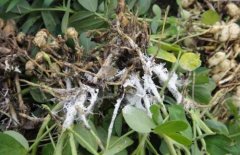What are the common diseases and insect pests in red jujube seedling planting and tree-shaped cultivation?
How to do red jujube seedling tree colonization and tree-shaped cultivation? How to control the common diseases of cultivated red jujube?

At present, red jujube trees are mostly picked and dwarfed, with a height of 1.5 to 2.5 meters, making it convenient for sightseeing orchards to pick fruit, so after the seedlings are planted, they should slowly pull branches and dwarf, so that the trees can be shaped with the help of happy natural formation or with the help of wire scaffolding. it can also prevent jujube trees from being toppled because of their shallow roots and easy to be toppled by strong winds.
The ideal row spacing is generally 3 × 4.5 meters or 4.2 × 4.2 meters, and the average number of plants per hectare is 600 to 740. Too dense planting density and too deep planting will affect tree growth, resulting in canopy closure, increased relative humidity in the garden, lack of light, slender branches, and reduced disease resistance. After planting, it is necessary to irrigate every 7-10 days until the seedlings survive. In order to avoid seedling lodging, props should be set up and weeds should be weeded every 1-2 months to control weed growth. The best time to transplant is after the Winter Solstice, when the fruit trees enter the dormant period and will not harm the roots.

In the first year of planting, the vegetative buds were removed when the vegetative buds were sprouted below 30 cm, and the new buds were retained as far as possible in the shape of multi-trunk trees to facilitate the elongation of branches. For the cultivation of single-stem natural happy trees, the vegetative buds less than 45 cm should be wiped out during the growth period, and those sprouting on them should retain 3-4 buds with a good growth angle to make them elongate to facilitate the cultivation of trunk branches. For 2-4-year-old plants, when entering the budding and flowering stage, the primary branch of the main bud of each shortening fruiting mother branch should be removed in the first 2-3 weeks, and the three basal fruiting branches should be retained in principle. Vegetative branches sprouting from the main buds of branches or terminal buds, if there is no room for extension, should be removed or removed early, so as to avoid serious fruit drop and disturbance of tree shape caused by nutritional competition. Therefore, after sprouting, it is necessary to regulate the growth of the main branch by wiping buds, thinning buds, picking the heart, and pulling branches. For vigorous branches, the best elongation angle is 50-60 degrees, and the weak branches are 70-90 degrees. After extending the branches to 2.5-3.5 meters, the method of pulling branches, hanging branches or supporting branches is adopted to construct a dwarfing tree.
The most common diseases and insect pests of cultivated red jujube are jujube rust, shell insects, coal disease, Huangshou melon, twill burglar, poisonous moths, anthrax, oriental fruit flies, beetles, coffee bark moths, stink bugs, red spiders and so on. The way of prevention is to pay attention to field hygiene and regular pruning, to maintain adequate sunshine and good ventilation in the orchard, and to remove diseased branches regularly. Fruit flies can be treated with traps such as methyl clove oil or yellow sticky paper to avoid damage to fruit trees.
- Prev

Peanut disease: how to control peanut white silk disease? What medicine is the best for peanut white silk disease?
Peanut disease of the White Cuckoo disease, peanuts with this disease will seriously reduce production, then how to prevent and control it? Symptoms: the appearance of the injured plant showed dehydration-like dryness, the underground stem browned and gangrenous, and attached a layer of white silk hyphae, which could spread outward and form a radial shape on the soil surface.
- Next

Method of planting lettuce: planting method, time and soil conditions of lettuce
Three aspects of lettuce planting methods are introduced, the seed characteristics of lettuce and the importance of suitable temperature for growth and soil conditions. Planting time: lettuce in the Yangtze River basin overwinters in the open field, mainly spring lettuce, sowing from September to October. Seed characteristics: lettuce seed
Related
- Fuxing push coffee new agricultural production and marketing class: lack of small-scale processing plants
- Jujube rice field leisure farm deep ploughing Yilan for five years to create a space for organic food and play
- Nongyu Farm-A trial of organic papaya for brave women with advanced technology
- Four points for attention in the prevention and control of diseases and insect pests of edible fungi
- How to add nutrient solution to Edible Fungi
- Is there any good way to control edible fungus mites?
- Open Inoculation Technology of Edible Fungi
- Is there any clever way to use fertilizer for edible fungus in winter?
- What agents are used to kill the pathogens of edible fungi in the mushroom shed?
- Rapid drying of Edible Fungi

